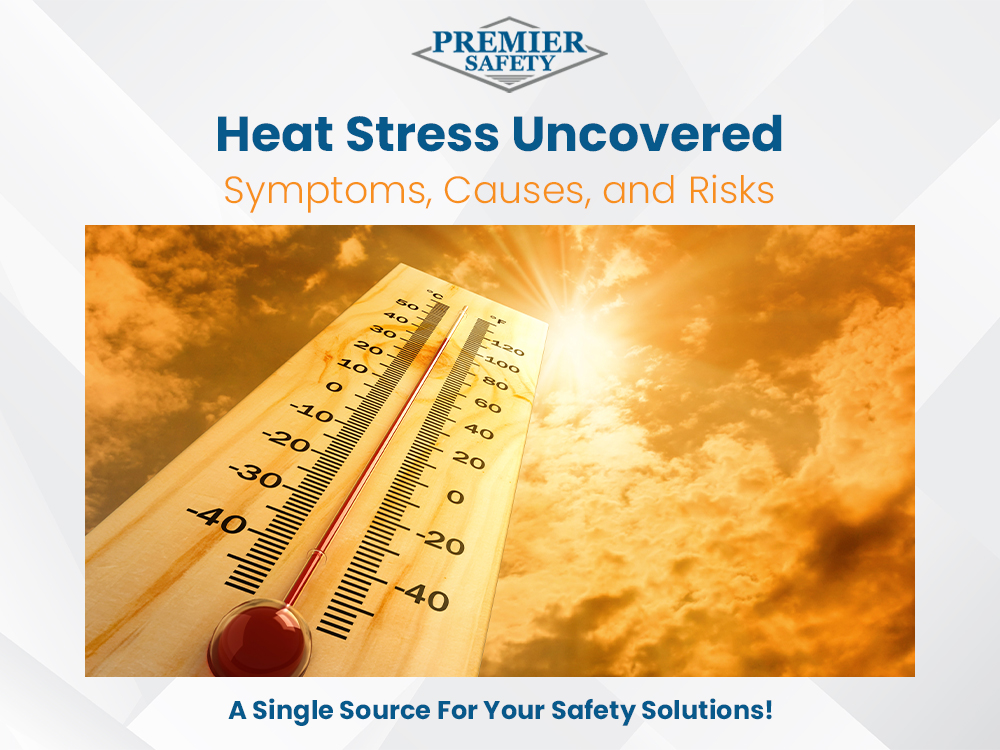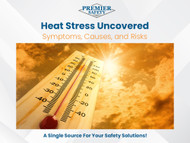Heat Stress Uncovered: Symptoms, Causes, and Risks
Posted by Michael Womack - Premier Safety on Jun 15th 2023

Heat Stress Uncovered: Symptoms, Causes, and Risk
Heat stress is a serious concern that affects individuals exposed to high temperatures or prolonged periods of heat. It can occur in various settings, from outdoor workers to athletes, and even individuals in non-air-conditioned environments during heatwaves. Understanding the symptoms, causes, and risks of heat stress is essential for preventing its harmful effects.
This blog post will explore the key aspects of heat stress. We will provide valuable insights on how to recognize this condition. Additionally, we will discuss how to address heat stress effectively.
Heat Stress Symptoms
Recognizing the symptoms of heat stress is crucial for early intervention and prevention. Some common indicators include excessive sweating, fatigue, dizziness, headache, nausea, muscle cramps, and rapid heartbeat. Other severe symptoms may include confusion, fainting, and even heat stroke. It's essential to pay attention to these warning signs and take prompt action to prevent further complications.
Heat Stress Causes
Several factors contribute to the development of heat stress. Environmental factors such as high temperature, humidity, and poor ventilation play a significant role. Occupational factors like working in physically demanding jobs, wearing restrictive clothing, and being exposed to direct sunlight intensify the risk. Additionally, personal factors such as age, fitness level, and underlying medical conditions can increase an individual's susceptibility to heat stress.
Heat Stress Risk
Heat stress poses significant risks to both physical and mental well-being. Prolonged exposure to high temperatures can cause heat exhaustion.
This condition is marked by a decrease in fluids and electrolytes in the body. If left untreated, heat exhaustion can progress to heat stroke, a life-threatening condition that requires immediate medical attention. Heat stress can also impair cognitive function, decrease productivity, and increase the likelihood of accidents and injuries.
Prevention and Safety Measures
Preventing heat stress is paramount, especially in high-risk environments. Implementing appropriate safety measures can significantly reduce the occurrence of heat-related illnesses. Here are some key preventive steps to consider:
Conclusion
Heat stress is a serious health concern that should not be taken lightly. Recognizing the symptoms, understanding the causes, and being aware of the associated risks are crucial for effective prevention and intervention.
We can reduce the effects of heat stress and protect people in different places. To do this, we need to put in place the right safety precautions and spread awareness. Stay informed, stay hydrated, and take proactive steps to combat heat stress. Together, we can create a safer and healthier environment for everyone.
It is important to consult healthcare professionals when dealing with heat stress. Adhere to relevant guidelines and regulations to ensure the safety and well-being of individuals in specific industries or settings.


